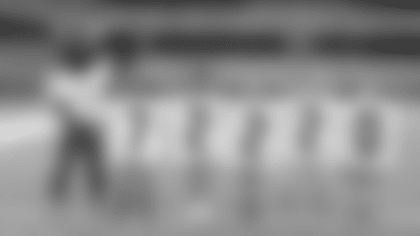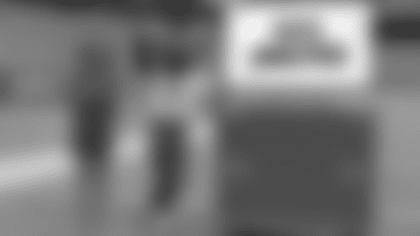TORO's Math Drills | Houston Texans - HoustonTexans.com

Place Values
TEKS Referenced:
•3.1(A) - apply mathematics to problems arising in everyday life, society, and the workplace.
•3.2(A) - compose and decompose numbers up to 100,000 as a sum of so many ten thousands, so many thousands, so many hundreds, so many tens, and so many ones using objects, pictorial models, and numbers, including expanded notation as appropriate.
•4.1(A) - apply mathematics to problems arising in everyday life, society, and the workplace.
•4.2(A) - interpret the value of each place-value position as 10 times the position to the right and as one-tenth of the value of the place to its left.
•4.2(B) - represent the value of the digit in whole numbers through 1,000,000,000 and decimals to the hundredths using expanded notation and numerals.

Money
TEKS Referenced:
•3.1(A) - apply mathematics to problems arising in everyday life, society, and the workplace;
•3.4(C) - determine the value of a collection of coins and bills;
•3.9(C) - identify the costs and benefits of planned and unplanned spending decisions;
•3.9(F) - identify decisions involving income, spending, saving, credit, and charitable giving.
•4.1(A) - apply mathematics to problems arising in everyday life, society, and the workplace;
•4.2(E) - represent decimals, including tenths and hundredths, using concrete and visual models and money;
•4.4(A) - add and subtract whole numbers and decimals to the hundredths place using the standard algorithm;
•4.10(B) - calculate profit in a given situation

Multiplication and Division
TEKS Referenced:
•3.1(A) - apply mathematics to problems arising in everyday life, society, and the workplace;
•3.4(E) - represent multiplication facts by using a variety of approaches such as repeated addition, equal-sized groups, arrays, area models, equal jumps on a number line, and skip counting.
•3.4(K) - solve one-step and two-step problems involving multiplication and division within 100 using strategies based on objects; pictorial models, including arrays, area models, and equal groups; properties of operations; or recall of facts.
•4.1(A) - apply mathematics to problems arising in everyday life, society, and the workplace.
•4.4(B) - determine products of a number and 10 or 100 using properties of operations and place value understandings.
•4.4(C) - represent the product of 2 two-digit numbers using arrays, area models, or equations, including perfect squares through 15 by 15.
•4.4(E) - represent the quotient of up to a four-digit whole number divided by a one-digit whole number using arrays, area models, or equations.
•4.4(F) - use strategies and algorithms, including the standard algorithm, to divide up to a four-digit dividend by a one-digit divisor.

Shapes
TEKS Referenced:
•3.1(A) - apply mathematics to problems arising in everyday life, society, and the workplace.
•3.6(A) - classify and sort two- and three-dimensional figures, including cones, cylinders, spheres, triangular and rectangular prisms, and cubes, based on attributes using formal geometric language.
•4.1(A) - apply mathematics to problems arising in everyday life, society, and the workplace.
•4.6(D) - classify two-dimensional figures based on the presence or absence of parallel or perpendicular lines or the presence or absence of angles of a specified size.

Perimeter and Area
TEKS Referenced:
•3.1(A) - apply mathematics to problems arising in everyday life, society, and the workplace;
•3.6(C) - determine the area of rectangles with whole number side lengths in problems using multiplication related to the number of rows times the number of unit squares in each row;
•3.7(B) - determine the perimeter of a polygon or a missing length when given perimeter and remaining side lengths in problems
•4.1(A) - apply mathematics to problems arising in everyday life, society, and the workplace;
•4.5(C)(D) - use models to determine the formulas for the perimeter of a rectangle (l + w + l + w or 2l + 2w), including the special form for perimeter of a square (4s) and the area of a rectangle (l x w); and solve problems related to perimeter and area of rectangles where dimensions are whole numbers.
School Visits













